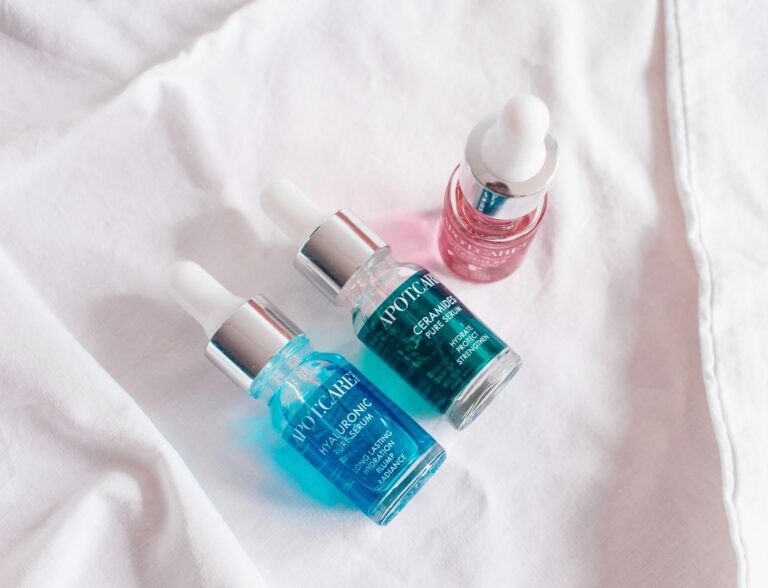
Filler migration is a prevalent concern for individuals seeking cosmetic enhancements, as it involves injected substances shifting from their intended location, leading to unforeseen outcomes.
It’s crucial for anyone considering dermal fillers to understand what causes this issue, recognize its signs, and learn how to prevent it. While the cost of dermal fillers in the UK can vary, investing in skilled practitioners who prioritize proper techniques is essential to minimize the risk of migration and achieve desired results.
This article delves into the complexities of filler migration, exploring the influence of injection techniques, the effects of aging, and effective strategies to achieve a smoother, more natural appearance. Together, we will discuss the dos and don’ts of filler treatments in the UK, providing valuable insights to help individuals make informed decisions.
What is Filler Migration?

Filler migration refers to the unintended movement of dermal fillers, particularly those made from hyaluronic acid, away from the original injection site following cosmetic procedures.
This issue has become an increasingly significant concern within the UK aesthetics community, as it can impact the aesthetic results that both patients and practitioners anticipate from their treatments. Understanding filler migration also involves recognising the different areas of the face that can be treated with dermal fillers, such as the lips, cheeks, jawline, and under-eye area, as these regions may vary in their susceptibility to migration.
Educating patients is vital, as it helps clients understand the potential risks associated with filler treatments and empowers them to take steps to minimise these risks during and after their procedures. By learning about the properties of various fillers and prioritising proper aftercare, patients can prevent migration and ensure optimal results that enhance both their appearance and confidence.
What Causes Filler Migration?
Filler migration may occur for several reasons, such as improper injection techniques, the choice of filler materials, and the natural ageing process of the skin. Factors like the duration of dermal fillers can also influence the likelihood of migration, particularly in areas prone to movement or localised swelling.
Each of these factors can significantly affect the safety and effectiveness of this non-surgical treatment. It is important for both practitioners and patients to understand these causes in order to achieve optimal treatment outcomes and reduce the risk of adverse effects.
The complexities involved in filler placement, along with the expertise of the practitioner, are crucial in preventing migration and ensuring long-lasting, natural-looking results.
1. Improper Injection Technique
Improper injection technique stands as one of the primary causes of filler migration. Even minor variations can lead to unexpected results, which can ultimately affect the overall aesthetic outcomes of the treatment. This underscores the significance of the injector’s skills and a deep understanding of facial anatomy during procedures. An experienced practitioner has the ability to significantly minimise the risks associated with filler placement, ensuring that the dermal filler remains in the intended area and functions as intended.
Common mistakes, such as injecting too superficially or at incorrect angles, can lead to migration, resulting in patient dissatisfaction and the potential necessity for corrective measures. Therefore, it is essential for practitioners to undergo thorough training and develop a comprehensive understanding of the complexities involved in facial structure. This expertise not only promotes accurate placement but also boosts patient confidence in achieving their desired results.
Ultimately, mastering the injection technique is directly linked to patient satisfaction, enabling the creation of natural-looking results that align with each individual’s beauty goals.
2. Using the Wrong Type of Filler
Using the incorrect type of filler can increase the risk of filler migration, as different formulations and types of fillers have distinct characteristics that affect their behaviour within the skin. For instance, certain hyaluronic acid fillers may vary in thickness and longevity, which impacts how well they integrate into the facial structure and how they respond to natural movements.
It is essential for both practitioners and patients to comprehend the differences between filler types to achieve their desired aesthetic goals without compromising safety.
Different fillers are specifically designed with unique characteristics, such as viscosity, cohesiveness, and elasticity, which determine their best applications—whether for subtle volumisation or significant contouring. Fillers that are more prone to migration can result in uneven outcomes and may require corrective procedures, which can introduce additional risks and complications.
Therefore, participating in comprehensive consultations at aesthetic clinics is vital. This process not only allows individuals to explore various filler options but also ensures that their specific anatomical needs and cosmetic goals are thoroughly addressed.
This personalised approach helps to minimise potential complications while maximising the chances of achieving natural-looking results, ultimately enhancing overall satisfaction with the treatment outcomes.
3. Natural Aging Process
The natural ageing process can indeed influence filler migration, as skin elasticity decreases and facial volume diminishes over time. This leads to a change in how dermal fillers are distributed.
As the skin ages, it loses structural support, which may cause previously administered fillers to shift or migrate, thus affecting the desired aesthetic outcomes. It is important to prioritise regular filler maintenance and to understand the ageing process in order to manage these changes effectively and ensure long-term satisfaction for patients.
Practitioners must remain attentive in their assessments, as age-related changes in the skin and facial fat can greatly impact the performance of fillers and their placement. Each passing year can bring about a loss of collagen and elastin, two essential elements that help maintain skin firmness and resilience. This reduction may also contribute to the formation of wrinkles and deeper folds.
To address these effects, healthcare professionals frequently recommend follow-up appointments to evaluate results and make any necessary adjustments to treatments. This approach helps ensure that patients achieve their desired appearance while preserving a natural look.
What are the Signs of Filler Migration?

It is essential for both patients and practitioners to recognise the signs of filler migration to facilitate timely intervention and achieve optimal aesthetic outcomes.
Common indicators to watch for include facial asymmetry, localised swelling, and the presence of visible lumps or bumps, all of which can undermine the desired results of the treatment.
Conducting a thorough visual assessment during follow-up appointments is important to monitor for these signs and to address any concerns that may emerge after the treatment.
1. Unevenness or Asymmetry
Unevenness or asymmetry in the face can often indicate filler migration, as it disrupts the balance of facial features and detracts from the overall aesthetic outcome. This issue may arise when the filler shifts from its intended placement, typically due to improper injection techniques or variations in individual anatomy.
It is essential to address these concerns promptly to maintain patient satisfaction and adhere to the desired treatment plan.
Several factors can contribute to this unevenness, including natural ageing, muscle movement, and the specific type of filler used, which may behave differently depending on the characteristics of the surrounding tissue.
For individuals seeking cosmetic enhancements, choosing skilled injectors is crucial, as their expertise plays a significant role in minimising the risk of adverse effects, including asymmetry.
Regular assessments following treatment are vital for quickly identifying potential issues, allowing practitioners to make necessary adjustments to the treatment plan. These proactive measures not only enhance aesthetic results but also foster trust and confidence between the patient and the injector.
2. Visible Lumps or Bumps
The presence of visible lumps or bumps can be a clear indication of filler migration, suggesting that the filler has shifted from its original placement. These lumps may also come with localised swelling, which can cause discomfort and lead to dissatisfaction with the treatment results.
A skilled practitioner should be able to assess these concerns quickly and determine the best course of action to restore optimal aesthetics.
Such irregularities not only affect the visual appeal but can also impact the overall comfort of the patient. It is crucial to address these issues, as uneven filler placement can create a less natural appearance, potentially drawing unwanted attention from others.
Regular evaluations by a qualified professional are essential for identifying early signs of migration and ensuring that any necessary adjustments or corrections are made promptly. Patients benefit significantly from the expertise of practitioners who understand the intricacies of filler treatments, as they can offer valuable guidance and solutions to help maintain the desired outcomes.
3. Changes in Facial Expressions
Changes in facial expressions can often indicate filler migration, especially when the filler has affected the underlying musculature or the dynamics of the skin. This situation may result in an unnatural appearance or diminished expressiveness, which is contrary to the intention of enhancing facial aesthetics through cosmetic procedures.
It is important to educate patients about the risks associated with filler migration and the signs to look out for, as this knowledge can enable them to seek timely assistance and maintain their desired results.
By understanding how their facial expressions may change, individuals can more effectively recognize any irregularities that might occur after treatment. Noticing subtle shifts in their appearance, such as asymmetry or stiffness in certain areas, can prompt them to address concerns promptly with their aesthetic practitioner.
Encouraging open communication between patients and practitioners regarding expected outcomes is vital for overall satisfaction. When patients are well-informed about potential issues like filler migration, they are more likely to develop realistic expectations and take a proactive stance in maintaining their aesthetic goals. This, in turn, can significantly enhance their confidence and satisfaction with cosmetic enhancements.
How to Avoid Filler Migration?

To prevent filler migration, it is important to adhere to certain guidelines that emphasise both safety and effectiveness. This includes selecting a qualified and experienced injector, utilising high-quality fillers, and following aftercare instructions carefully after the treatment.
The skill of the practitioner is vital, as it directly affects the proper placement of the filler, which in turn influences the longevity and overall results of the procedure. By being proactive in these aspects, patients can greatly minimise the risk of migration and work towards achieving their desired aesthetic outcomes.
1. Choose a Qualified and Experienced Injector
Selecting a qualified and experienced injector is crucial for preventing filler migration, as their expertise has a direct impact on the safety and effectiveness of the treatment. A skilled practitioner will not only grasp the nuances of various fillers but will also be proficient in creating a tailored treatment plan that aligns with the patient’s aesthetic goals. This thoughtful approach helps ensure that patients feel comfortable and confident in their results, ultimately minimising the risks associated with filler procedures.
It is advisable for patients to thoroughly research potential injectors, taking the time to examine their credentials, professional associations, and patient reviews. Additionally, asking questions about the practitioner’s training, experience, and their approach to addressing common complications can yield valuable insights. Understanding these aspects not only enables patients but also reinforces their trust in the injector’s expertise.
By prioritising expertise when selecting an injector, individuals can significantly enhance the likelihood of achieving their desired outcomes while also reducing the potential for adverse effects.
2. Use High Quality Fillers
Utilising high-quality fillers is essential for minimising the risk of filler migration. Different dermal filler brands offer unique formulations that can significantly influence their behaviour within the skin. By selecting products from reputable manufacturers, practitioners can ensure greater safety and efficacy in their cosmetic procedures.
Understanding the various types of fillers available allows both practitioners and patients to make informed decisions that align with their aesthetic goals.
When patients choose low-quality fillers or those from questionable sources, they inadvertently increase the likelihood of undesirable outcomes, such as lumps or uneven texture. Established brands typically adhere to rigorous quality control processes and employ advanced formulations designed to achieve optimal results while minimising complications.
This highlights the importance of engaging in open conversations with healthcare providers about the specific fillers being utilised. Such discussions enable patients to not only understand the options available to them but also to grasp how these choices may impact their overall treatment experience and satisfaction.
3. Follow Aftercare Instructions
Diligently following aftercare instructions is crucial for preventing filler migration and enhancing the overall success of the treatment. Proper post-treatment care can help reduce risks such as localised swelling and discomfort, allowing the filler to settle correctly in the intended areas.
It is important for patients to communicate openly with their injector about any concerns or unexpected symptoms that may arise during the recovery period.
Sticking to these guidelines not only supports the healing process but also ensures that the desired aesthetic outcomes are achieved. Ignoring aftercare advice can lead to complications, potentially causing the filler to shift from its intended location, which can compromise the results.
Patients are encouraged to ask questions and clarify any aspects of care that may seem confusing or challenging to manage. Maintaining an ongoing dialogue with the practitioner creates a supportive environment, allowing for timely interventions if any issues arise. This approach promotes a smoother recovery and optimal satisfaction with the treatment.
What to Do If You Experience Filler Migration?

If you notice signs of filler migration, it’s important to take proactive measures to address the situation, beginning with a consultation with your injector.
Open communication is essential in these cases, as your practitioner can evaluate the extent of the migration and explore possible solutions, which might involve dissolving the filler or making adjustments to the treatment.
Understanding the available options can help patients feel more at ease and enableed when it comes to managing their aesthetic results.
1. Consult with Your Injector
Consulting with your practitioner is the first and most crucial step if you suspect filler migration. Their expertise and understanding of your treatment can provide valuable clarity and guidance.
A comprehensive assessment will help identify the underlying cause of the migration, ensuring that appropriate measures are taken to restore the desired aesthetic outcomes. This process emphasises the importance of patient education in understanding the complexities of filler treatments.
The practitioner plays a vital role in evaluating the situation and addressing any concerns you may have. They can provide insights into various factors that may contribute to migration, such as the type of filler used, the injection technique, or individual anatomical variations.
By fostering open communication, the practitioner can help clarify the process, enableing patients with the knowledge needed to make informed decisions.
This collaborative approach not only reassures patients but also highlights the significance of maintaining a safe and satisfying aesthetic journey. Informed patients are more likely to achieve their desired results, reinforcing the value of this partnership in the aesthetic experience.
2. Consider Dissolving the Filler
Considering the option to dissolve filler can be a practical choice if migration is confirmed, especially with hyaluronic acid-based products, which can be effectively reversed using hyaluronidase. This approach may help restore the natural contours of the face and alleviate any discomfort that migration may have caused.
It is important to discuss this possibility with your practitioner to evaluate the pros and cons and make the best decision aligned with your aesthetic goals.
Hyaluronidase is an enzyme that breaks down hyaluronic acid, allowing for the rapid reabsorption of the filler without causing lasting damage to the surrounding tissues.
When engaging in discussions about this procedure, patients should reflect on their personal aesthetic goals and consider how the migration might be affecting their overall appearance. A comprehensive conversation with the practitioner can address any concerns, provide valuable insights into the process, and tailor the approach to meet the individual’s unique needs, ensuring they feel confident and satisfied with their decision as they move forward.
3. Be Patient and Give It Time to Settle
Being patient and allowing time for the filler to settle is often necessary, especially if signs of migration appear. Initial swelling and bruising can sometimes obscure the true result of the treatment.
As time goes on, many patients notice an improvement in the appearance of the filler as it integrates into the surrounding tissue. Recognising that some fluctuations are normal can help patients maintain comfort and have realistic expectations regarding their aesthetic outcomes.
It is important for individuals to keep in mind that while the initial results may not meet their expectations, significant changes can occur as the filler acclimatises. This adjustment period can vary from person to person, which is why a patient approach is essential.
Maintaining open lines of communication with practitioners is vital for monitoring any concerns or unexpected changes. Practitioners can offer tailored advice and reassurance, ensuring that any potential signs of migration are effectively addressed.
By fostering this dialogue, patients can enjoy a more fulfilling journey towards their desired aesthetic results while feeling supported throughout the process.
Frequently Asked Questions
What is filler migration?
Filler migration refers to the movement of dermal fillers within the face after they have been injected. This can cause an uneven or distorted appearance and can also lead to potential health risks.
How does filler migration occur?
Filler migration can occur due to several factors, such as the type and amount of filler used, the technique of injection, and the individual’s facial anatomy. Factors such as excessive facial movement and suboptimal placement of the filler can also contribute to migration.
What are the risks of filler migration?
If filler migration occurs, it can result in an asymmetrical or unnatural appearance, lumps or bumps, and even nerve damage. It can also increase the risk of infection or allergic reactions.
How can filler migration be prevented in the UK?
To avoid filler migration, it is crucial to choose a reputable and experienced practitioner who is trained in proper injection techniques. It is also essential to avoid excessive facial movement and follow post-treatment care instructions carefully.
What can I do if I experience filler migration?
If you notice any signs of filler migration, it is best to consult with your practitioner immediately. They may recommend massaging the area, injecting additional filler to correct the problem, or dissolving the filler completely.
Are there any alternative procedures to dermal fillers to avoid migration?
Yes, there are various alternative procedures to dermal fillers that can help achieve similar results without the risk of migration. These include Botox injections, laser treatments, and microneedling.






